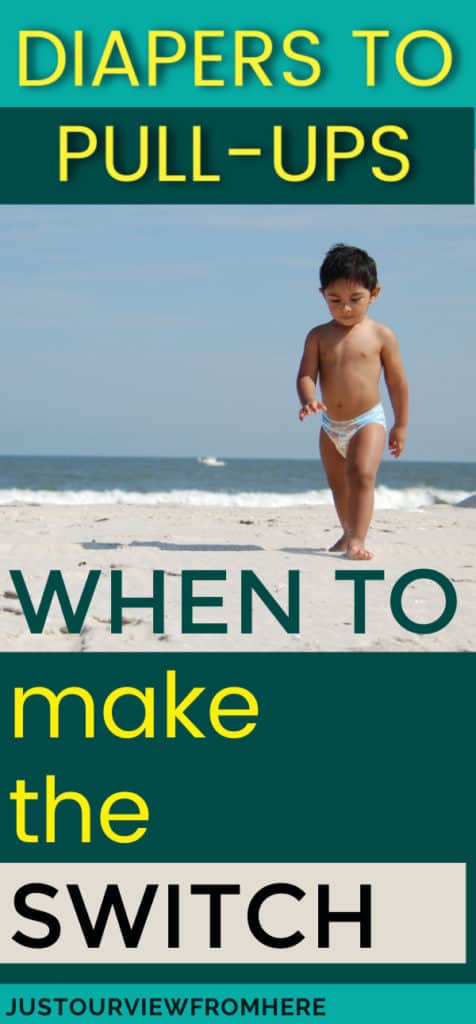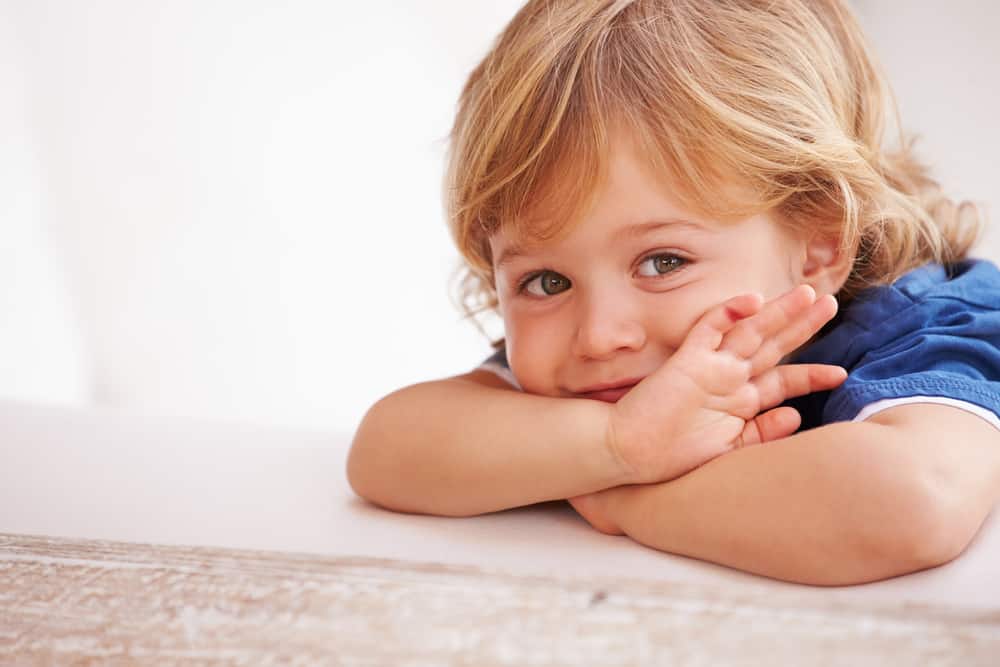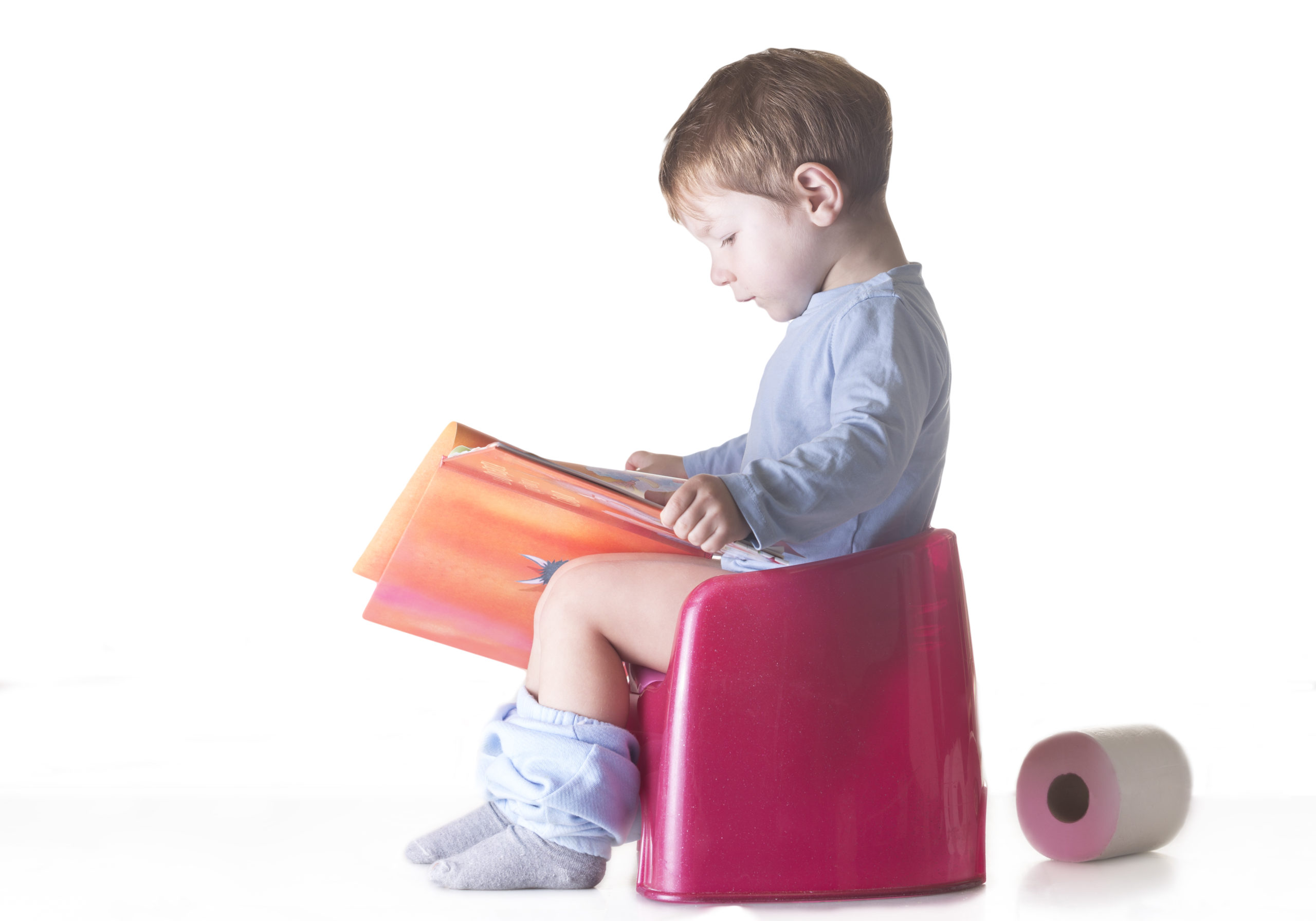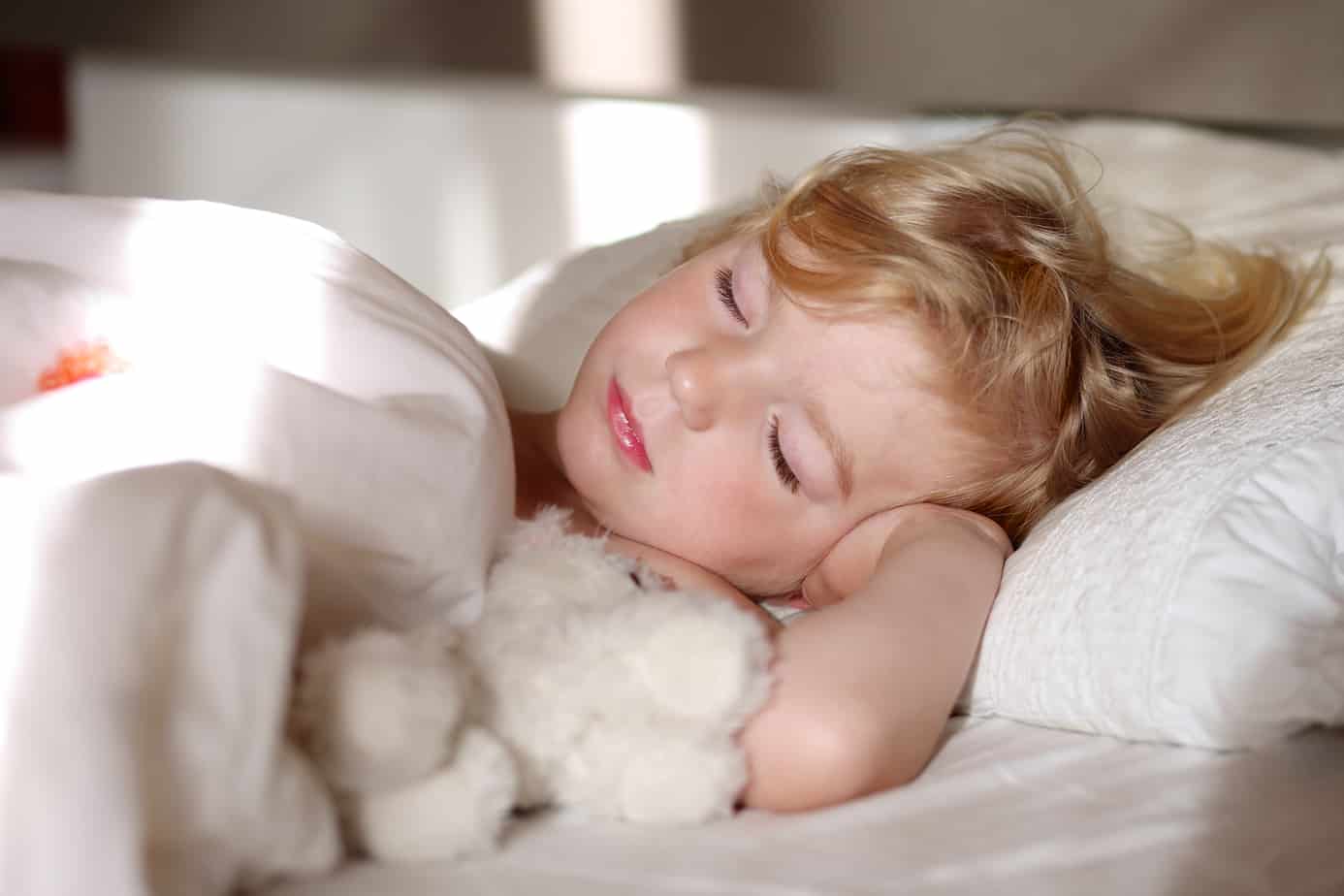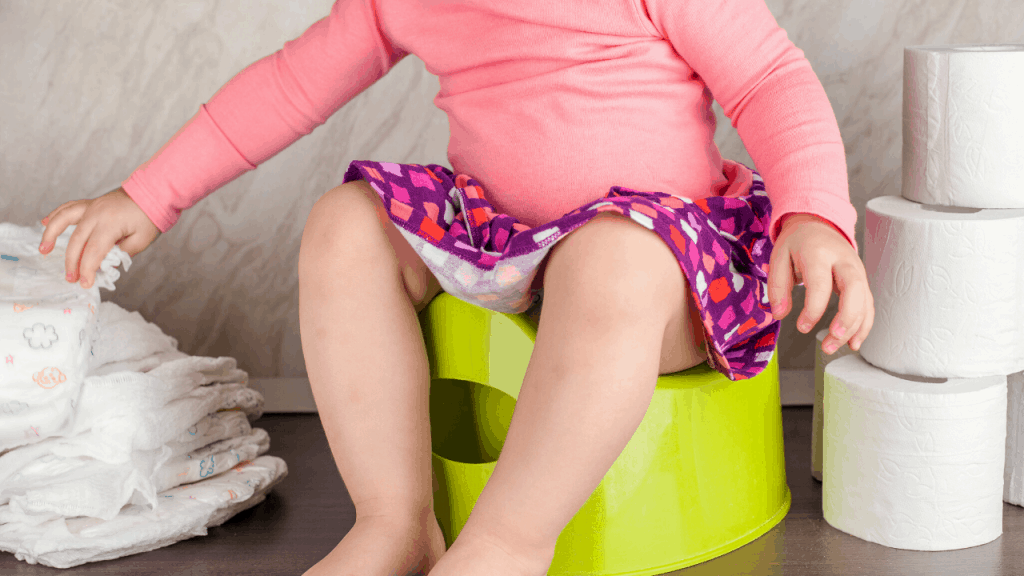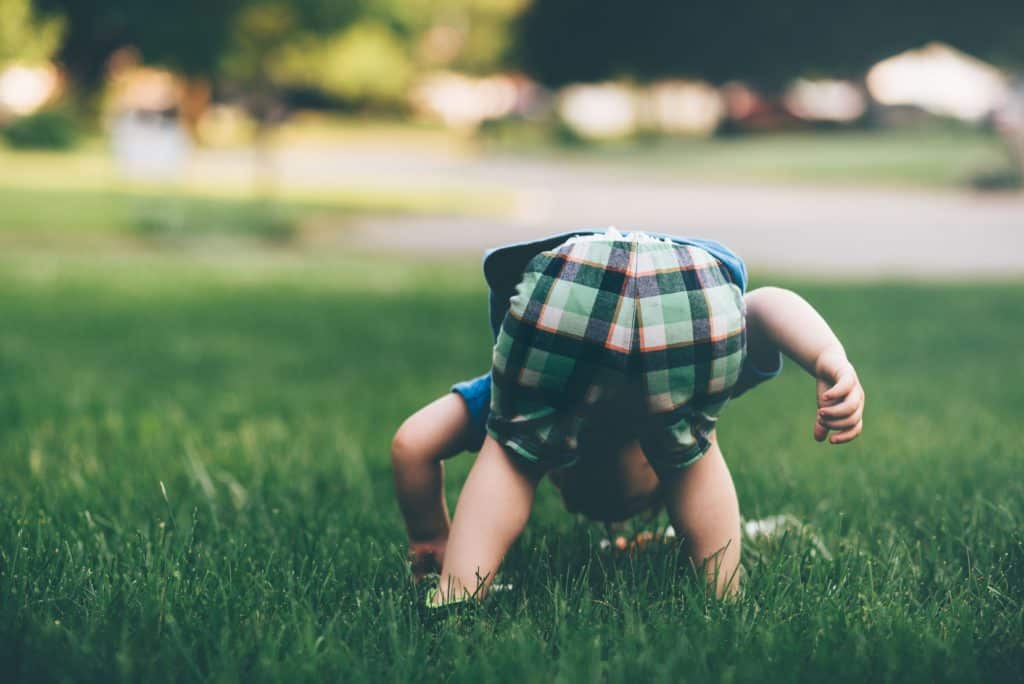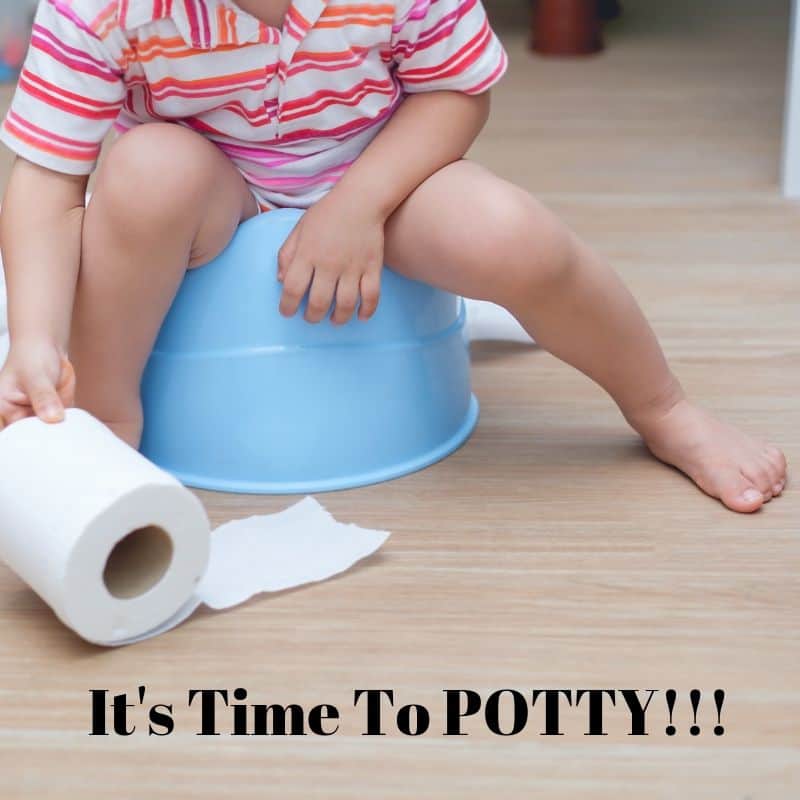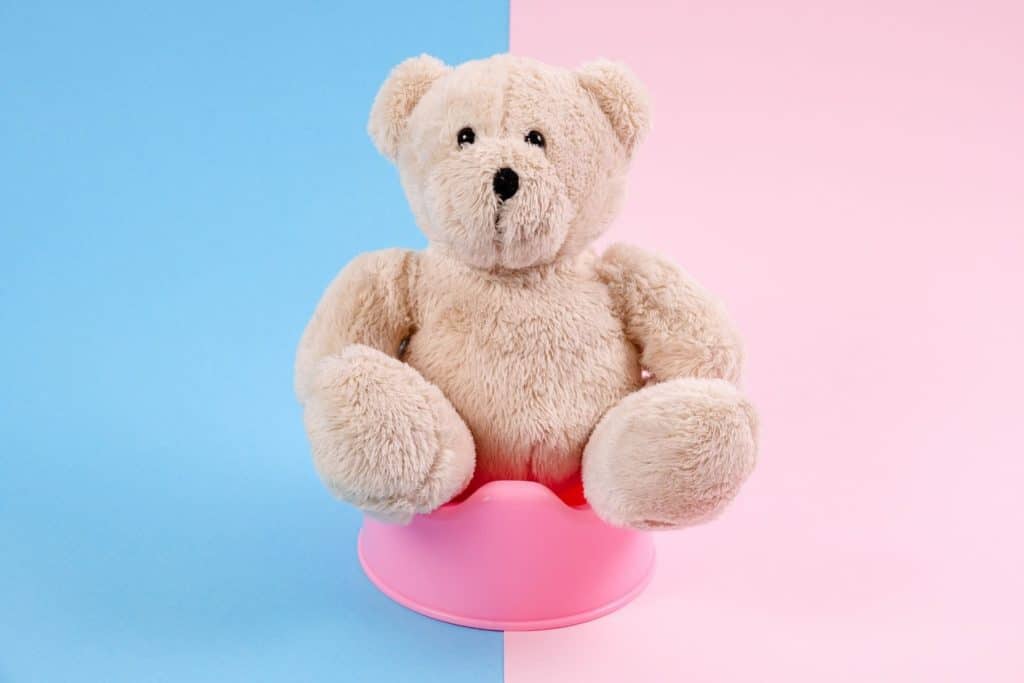Let’s face it, changing diapers isn’t one of the joys of parenting but at least when changing an infant it’s relatively easy. Then comes the toddler stage with all the squirming, wriggling and fighting you at every turn. Sort of like wrestling an octopus. So, when to use Pull-ups? When to make the switch?
When to switch from diapers to pull-ups? Here are 8 signs that your toddler may be ready:
- Tugging at tabs on their diaper
- Telling you they have a wet /dirty diaper
- Pulling down (or attempting to pull down) their own bottoms
- Staying dry for longer periods of time
- Diaper changes have turned into a wrestling match
- Telling you they’re ready, Eg. “Diapers are for babies”
- Showing an interest in bathroom/toilet
- Awareness of their bodily functions
Some of my blog posts may contain affiliate links, from which I may receive a small commission at no additional cost to you. More info on that here.
Are Diaper Changes Becoming A Nightmare?
Is your toddler fidgeting, grabbing your hands or kicking when you try to change them?
Are you struggling to hold them still, grab the wipes, then the bum cream or powder as everything is getting knocked off the changing table?
Does your kid not even fit on the change table anymore??
Are you out of breath when you’re finished as if you’ve just done a kick-boxing class?
You get the point.
If you’ve reached this level of the writhing octopus wrestling challenge, it may be time to ditch the diaper. Usually, physiologically the change will start happening on average around age 2. But as with everything toddler related, there is a range as far as “typical” goes.
For some, it may be as early as 18 months, while other kids will not resist at all during diaper changes. Remember, every child is unique. We were at the stage where every diaper change was burning up to 300 calories. There was more bum cream getting all over the place (and on us!) than on the actual bum. We were so done with diapers. If any of this sounds familiar, it’s time.
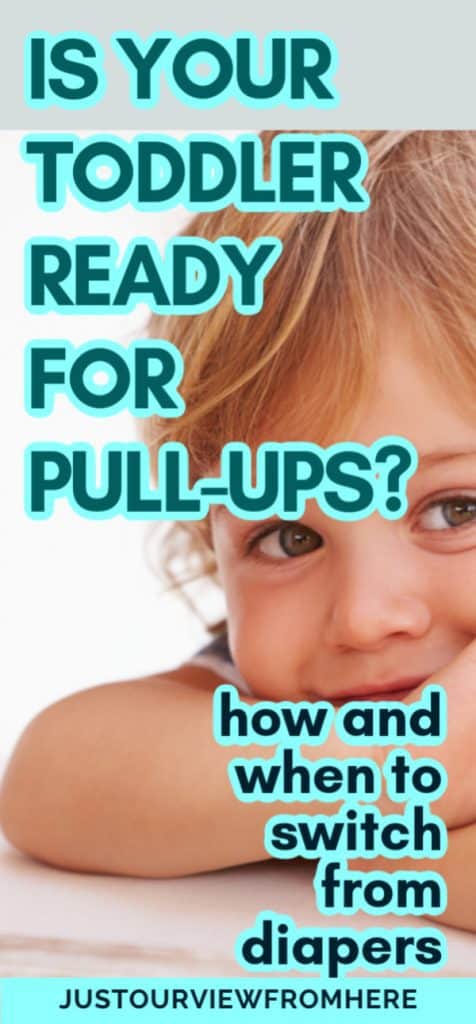
Pull-ups Are Great To Use Just Prior To Starting Potty Training
We used the Pull-ups starting at age 2 and began potty training around 2 and 1/2. And once we made the switch, we found them much easier to deal with than diapers. As soon you can change your child on the fly, while they are standing up, you’ll never look back. You’ll get really good at it too!
For #2 still lay them down, of course. Just do the best you can if they are very wiggly. We found giving our son a little book to hold and look at or the Muppets Manamana video on our phones was a handy little distraction at this stage. That song is the absolute perfect length!
Toddlers love to assert their independence and learning to pull their own bottoms up and down can be an excellent motivator for them.
Naturally, they will need your help at first but your toddler will catch on quickly. Kids at this age thrive on being involved. It’s important to make them feel like they are becoming independent and making their own choices. Accidents are going to happen but it’s all about learning something new and making it a routine.
Talk it up before the big day, so they know something different is about to happen. Make a big deal out of it by saying “Bye-bye diapers, we are moving on!”
Your toddler will be excited and know that something new is happening. If they’re on board, you’ll know it and if they aren’t, you’ll definitely know that too. If that’s the case, you can always pull back and try again in a couple of weeks.
The whole potty training experience differs for every parent and each child. Some go hardcore with 3-day boot camp style, while others just wait it out until their child tells them they are ready to use the potty. It’s a personal preference that you can research for yourself then decide which method you prefer to try.
We used the Oh Crap potty training method and found it worked like a charm for us for daytime training. But whatever method you go with, at some point you’ll most likely be using Pull-Ups either just for a little while or only at night like we did.
If you’re interested in trying Oh Crap Potty Training, I’ve got some very helpful info to share with you. Click HERE to learn all about it.
Pull-Ups or Easy-Ups-What’s The Difference?
As far as absorbency and leakage, we didn’t find much difference between the two brands. The main difference is that Huggies (Pull-Ups) has Velcro sides (similar to the tabs on the swim diapers and the Pampers (Easy-Ups) instead has tear-away sides (kind of like a perforated line).
We didn’t use any other brands so I won’t comment on that but if your child is always taking his diaper off by pulling on the tabs, you may want to choose the Easy-Ups with the perforated sides. They most likely will not be able to tear them but you can easily do it.
Best idea is to try both and see what works for you. If your kid tends to be a streaker and you frequently find him or her running through the house bare bum you might do better with Easy-Ups. They are more likely to stay put.
Do Pull-Ups Hinder Potty Training?
That’s a bit of a multi-layered question. And actually, among parenting forums and FB groups it can even be a divisive topic.
You’ll find a million different opinions on whether potty training with Pull-ups is a good idea or not but ultimately you decide what will work best for your toddler. It goes without saying that you are the parent so it’s your choice. I feel like a broken record but again, every kid is different so there are no wrong answers here!
But, for what it’s worth, here’s my two cents…
Think of it like this. Besides the way it goes on, a Pull-Up is essentially the same as a diaper. It’s absorbent, designed to hold a TON of liquid, and to stay dry against your child’s skin. And what have they always done in their diaper? Pee and poop right?
To your child there’s really no difference between a diaper and a Pull-up. They know they can pee in it, so logically, most will do just that. Kids at 2-3 can get really into deep play and just won’t stop what they’re doing to go potty.
So, keeping them in Pull-ups for too long might diminish the incentive to potty train. HOWEVER, they are great to use as a transitional tool prior to starting toilet training.
With the Oh Crap method, you don’t use diapers or pull-ups during the day at all. It starts with commando and then right to underwear. That’s what I would recommend. That being said, we made the decision to stick with Pull-ups or Easy-ups for nighttime until we have about 95% dry nights. We’re still working on that. We still did the “Bye-Bye diapers” thing and called them naptime/nighttime underwear.
So, in my opinion, and using only our personal experience, Pull-ups may hinder day potty training if used for too long a period of time, but using them PRIOR to starting is a great idea. And for naptime and nighttime, I am 100% on board with using them.
Also if you are going on a long road trip with a toddler, it’s a good idea to use them to save a mess in the car seat. We did this on our vacation when we were potty training and it didn’t result in any regression for our son.
Signs Your Toddler Is Ready To Make The Switch From Diapers
Your child will give you plenty of hints that display signs of readiness, all you have to do is looks for cues. Remember, you know your child best! All these are indicators that your child may soon be ready to potty train and therefore it may be a great time to try Pull-ups or Easy-ups! Using these for a few months before you actually begin potty training will make your life so much easier.
REMEMBER TO WATCH FOR THESE CUES!
- Tugging at the tabs on the diaper or taking the diaper off completely
- Wanting nothing to do with staying in a soggy, dirty diaper
- Pulling down (or attempting to pull down) their own bottoms
- Staying dry for periods of up to 2 hours
- Fighting diaper changes
- Telling you “I’m a big girl/boy” or “Diapers are for babies”
- Showing an interest in the toilet
- Awareness of their bodily functions. This goes in 3 stages:
- Being aware that they are going.
- Telling you that they have just gone.
- Telling you before they go or that they need to go. This one is the key and if your toddler is doing this then they are DEFINITELY READY to potty train. Don’t miss your window of opportunity!
Wrapping Up
Easy-Ups or Pull-Ups are best to use in the few months leading up to potty training and can be a great transitional tool. As soon as your child shows some willingness to try to pull their own bottoms up and down, you are good to go. Say goodbye to wrestling matches on the change table or bed!
Switching from diapers to Pull-ups will make life so much easier for you and be a great confidence booster for your little one. Use them for naps and at night as long as you need to and until your child is physically able to stay dry throughout the night.
Soon your big kid will be off and running and you will be diaper free! Pull-ups can be a great way to transition your little one from diapers and crazy, messy diaper changes to eventually being fully potty trained! And believe me, I know, when you are in the midst of it it feels like it will never end.
But I promise you, there will come a day when you aren’t thinking about pee and poop 24-7. Best of luck and hang in there, because this too shall pass!
Until next time, K.

Kelly Blakely is the founder and creative force behind Just Our View From Here. As a first-time mom over 40, she brings a fresh perspective to parenting and family life on her blog. Kelly also explores a wide range of lifestyle topics in her writing, including fashion, beauty, self-care, and well-being.
Additional Resources
The Mayo Clinic website can also provide you potty training readiness articles and tips on how to get started.
Best Potty Training Books For Toddlers
Having Potty Training Books on Hand is a Must When Toilet Training Toddlers! Kids learn…
Should You Wake Your Child To Pee At Night?
Helpful Hints For Night Time Potty Training Should you wake your child to pee at…
Potty Training Essentials Ultimate Supply List
So you’re ready to tackle potty training…Woohoo! It’s a major and very messy toddler milestone….
Oh Crap Potty Training: Our Experience
We are 2 months into this method and I thought I would give an update…
Oh Crap Potty Training Method Pt.2
Our Oh Crap Potty Training Method Experience: Some Triumphs, Some Trauma We are pleased to…
Preparing For Potty Training- Pt.1 The Day Before The Big Day
When it comes to potty training and preparing for potty training, there’s no shortage of…
Just Our View From Here is a participant in the Amazon Services LLC Associates Program, an affiliate advertising program designed to provide a means for sites to earn advertising fees by advertising and linking to Amazon.com.
